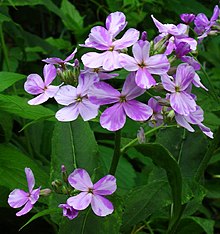University of Michigan Matthaei Botanical Gardens & Nichols Arboretum student summer intern Zhenzhen Zhang enjoyed the rare opportunity to observe the peony cut flower judging sessions at the American Peony Society annual meeting in Louisville last May 2015. Zhenzhen recounts her experiences at the show.
My
name is Zhenzhen Zhang and this summer (2015) I’m working as an intern in the
University of Michigan Nichols Arboretum Peony Garden. I have an undergraduate
degree in ornamental horticulture and I’m now pursuing a Master of Landscape
Architecture in the U-M School of Natural Resources and Environment.
My
undergraduate background has given me some knowledge of peonies. Moreover,
peonies, especially the tree peony, originated in China.
Dr.
David Michener, the curator at Matthaei Botanical Gardens & Nichols
Arboretum, invited me to the American Peony Society meeting this May. While
there I had the rare opportunity to observe the peony judging process. It was
an honor to be an observer of the judging and it provided me a lot of insight
into the world of the peony as a cut flower in the U.S.
The
grand champion—or “Queen of the Show”—at the APS convention was the variety
‘Salmon Dream’. This variety, pictured below, had a clean coral color and
perfect symmetry.
 |
| Grand Champion - "Queen of the Show" |
So
what made this peony the Queen of the Show? Judging of cut peonies depends on
several criteria. Before we talk about those criteria, let’s review the six
peony bloom forms.
First
is the single form. Singles in cultivation may have up to 15 petals (wild form
5 petals), with a saucer shape, pollen-bearing stamens, and functional carpels.
 |
| Single form peony |
Next
is Japanese form. Diagnostic of the Japanese form are staminodes—rudimentary or
sterile stamens that do not produce pollen, which means there are transformed
stamens in which that original is still recognizable.
 |
| Japanese form peony |
The
third is the anemone form. The stamen transformation has progressed to the
point where all visible evidence of stamen origin, except for its yellow color,
has disappeared.
 |
| Anemone form peony |
The
next is the bomb form. This form looks like a ball sitting on a plate.
The
semi-double form has prominent stamens and a bulking of petalage (one of the
segments of the corolla of a flower), an increased number of guard petals, or a
guard petals structure which adds visual bulk to the flower.
The
last one is double form, in which all stamens and carpels are transformed into
petals.
We
need to know these forms because they are the basis for classifying peonies. If
the exhibitor places his or her peony in the wrong group—for instance mistaking
a semi-double for a single—no matter how perfect the peony is, the flower loses
any opportunity for an award.
 |
| Bomb form peony |
Another
factor in peony classification is its group---Lactiflora, Hybrid, Suffruticosa,
Lutea; Moreover, the color is also considered in the classification, such as
white, pink, and red.
 |
| Double form peony |
Now
to the peony judging. What do judges look for?
1.
Form
The
perfection of form is the most important to the judging process. This means
petals must be uniform and symmetrical; Japanese and singles should be properly
placed; doubles should have petals symmetrically arranged with edges re-curved
with a rosebud center.
 |
| Semi-double form peony |
Poor
form will look ‘relaxed’ or drooping, and sometimes the stamens and staminodes
are not firmly held. Cupped varieties should not be cupped to hide the center.
Guard petals may have notching and uneven length.
2.
Color
The
color should be clear, clean, and fresh. Multi-colors should be harmonious. The
texture of petals should be silken, with a velvet or satiny sheen.
 |
| Symmetrical, uniform. |
3.
Condition and Grooming
Flowers
should be in fully mature and peak condition; fallen pollen indicates they are
past prime. Judges also watch for bruised petals and dark spots; there should
be no side buds.
Judging
only considers the condition of the flower at the moment of judging, and does
not take into consideration whether the flower would bloom nicely the following
day, or whether it bloomed perfectly the day before.
Exhibitors
came from all over the United States. Peonies from warmer climates bloom earlier, while peonies from colder
climates may bloom later. In order to make their own peonies show well at the
judging, exhibitors employed methods to keep or force peonies to open. Delivery
is also a time when peonies might be damaged. So attaining the best form,
shape, and condition is challenging. What’s seen at the judging represents an entire
year of preparation. They all deserve a reward!
 |
| Drooping petals |
 |
You can see some flowers in
this white group are not pure
white, so they are not good ones |





































